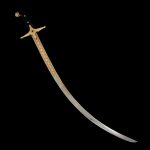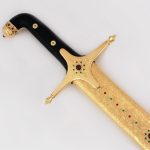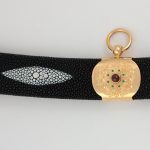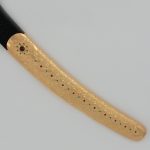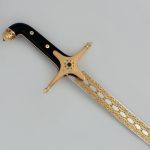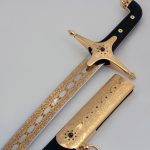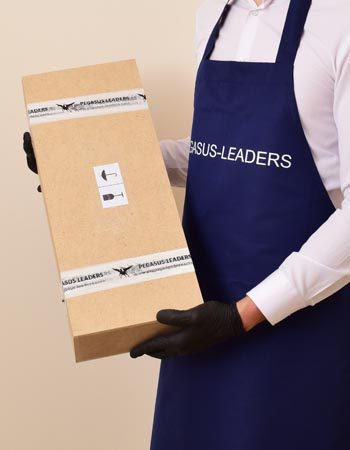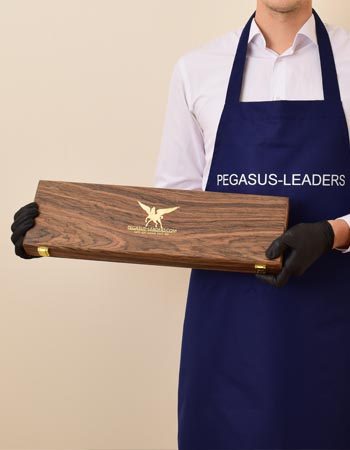In the East, there was an incredible variety of types of sabers, but it is customary to distinguish only a few so-called “classic” types: a Turkish saber klych (kylych) or kilidzh, an Iranian saber shamshir (shemshire), an Indian saber tal’war (talwar), Chinese dao and sword-saber Zulfakar.
The blade of the saber is made of high-quality knife steel. The surface polished to a mirror shine is covered with gold patterns using the technique of Zlatoust engraving on metal. For the second century in a row, the Zlatoust metal engraving is an original and rare kind of Russian craft. It was born at the beginning of the 19th century as a way of decorating author’s edged weapons made at the Armory founded by decree of Tsar Alexander I.
A black wooden hilt made of rare wood is suitable for the stingray skin covering the scabbard of the saber. Stingray skin has become a loud statement of a new trend in the global leather market. It brings its owner a touch of luxury and a confirmation of its exquisite taste and incomparable style. Stingray skin creates a wide range of new possibilities for expressing the original taste in saber decoration.
The work of Zlatoust masters, the saber decorated with stingray skin, is a universal version of an elite / VIP gift for a wealthy man on his anniversary, wedding, birthday, general or personal, including a professional holiday.













